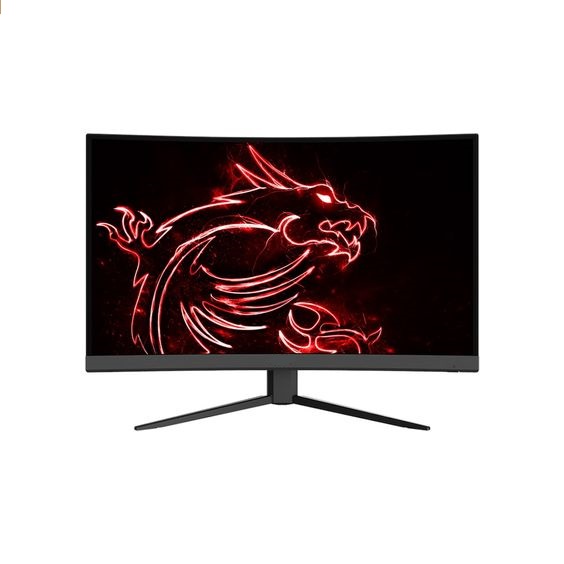When it comes to gaming, the right monitor can make a world of difference. Whether you’re a competitive gamer who needs lightning-fast response times or someone who craves stunning visuals for engaging gameplay, a gaming monitor is an essential part of your setup. But with so many options available, how do you choose the best one? In this guide, we’ll break down the key features to look for and help you find the perfect gaming monitor for your needs.
1. Why a Gaming Monitor Matters
A gaming monitor isn’t just a regular screen—it’s built to enhance your gaming experience by providing faster response times, higher refresh rates, and sharper visuals. A good monitor can drastically improve your reaction time in fast-paced games and deliver an engaging experience in open-world or story-driven games. It’s one of the most critical pieces of hardware for serious gamers.
2. Key Features to Consider
When shopping for a gaming monitor, several factors can impact your experience. Here are the key features to consider:
Refresh Rate
The refresh rate, measured in Hertz (Hz), determines how many times per second the screen refreshes the image. A higher refresh rate results in smoother motion, which is crucial for fast-paced games like shooters or racing games.
- 60Hz: Standard for most monitors but not ideal for competitive gaming.
- 120Hz – 144Hz: Great for most gamers, providing a noticeable improvement in smoothness.
- 240Hz and Above: Preferred by professional gamers for ultra-smooth gameplay.
Response Time
Response time refers to how quickly pixels can change from one color to another, typically measured in milliseconds (ms). Lower response times reduce motion blur and ghosting, which is especially important in fast-action games.
- 1-2ms: Ideal for competitive gamers who need the fastest response times.
- 4-5ms: Sufficient for most gamers, offering a good balance between performance and cost.
Resolution
Resolution impacts the sharpness and clarity of your display. The higher the resolution, the more detail you’ll see in your games.
- 1080p (Full HD): Still the standard for many gamers due to affordability and high refresh rate compatibility.
- 1440p (Quad HD): A step up from 1080p, offering better clarity without too much strain on your system.
- 4K (Ultra HD): Stunning visuals with incredible detail, but requires a powerful GPU to handle games at high settings.
Panel Type
The type of panel used in a gaming monitor affects color accuracy, viewing angles, and response times. The three main types are:
- TN (Twisted Nematic): Known for fast response times and affordability, but sacrifices color accuracy and viewing angles.
- IPS (In-Plane Switching): Offers superior color reproduction and viewing angles but typically has slightly slower response times.
- VA (Vertical Alignment): A middle ground between TN and IPS panels, offering better colors than TN and faster response times than IPS.
Adaptive Sync Technology
Screen tearing occurs when the monitor’s refresh rate and the frame rate of the game are out of sync. Adaptive sync technology prevents this by syncing the refresh rate of the monitor with the frame rate of your GPU.
- G-Sync (NVIDIA): Built for NVIDIA GPUs, G-Sync ensures smooth performance with compatible graphics cards.
- FreeSync (AMD): Similar to G-Sync but designed for AMD GPUs. FreeSync monitors tend to be more affordable.
3. Size and Aspect Ratio
Choosing the right monitor size and aspect ratio can greatly impact your gaming experience:
Monitor Size
- 24-27 inches: The most popular sizes for gaming monitors. These offer a great balance between screen space and visual clarity, especially in 1080p and 1440p resolutions.
- 32 inches and above: Ideal for 1440p and 4K gaming, offering an engaging experience with larger screen real estate. Be mindful that larger monitors require more powerful hardware to handle higher resolutions effectively.
Aspect Ratio
- 16:9: The standard aspect ratio for most monitors and games. It’s widely supported and works well for a variety of gaming genres.
- 21:9 (Ultra-Wide): Ideal for engaging gameplay, offering a wider field of view in games. Great for racing, simulation, and open-world games but may require a more powerful GPU.
4. Benefits of a Gaming Monitor
Improved Gameplay
A gaming monitor with a high refresh rate and low response time will make fast-paced games smoother and more responsive. This can give you an edge in competitive games, where every millisecond counts.
Enhanced Visuals
Higher resolution and better color accuracy can transform your gaming experience, especially in visually demanding games. A gaming monitor allows you to appreciate the fine details, vivid colors, and sharp contrasts that standard monitors can’t deliver.
Reduced Eye Strain
Gaming monitors often come with features like flicker-free technology and blue light filters, helping to reduce eye strain during long gaming sessions. This makes it more comfortable to play for extended periods.
5. How to Choose the Right Gaming Monitor for You
When choosing the perfect gaming monitor, consider your gaming style and preferences:
- Competitive Gamer: Look for high refresh rates (144Hz or higher), low response times (1-2ms), and adaptive sync technology to minimize input lag and screen tearing.
- Casual Gamer: A 60Hz to 144Hz monitor with a good balance of response time and image quality (IPS or VA panel) will provide a great experience without breaking the bank.
- Engaging Gamer: If you’re into open-world games or simulators, consider a large, high-resolution monitor (1440p or 4K) with an ultra-wide aspect ratio for maximum engaging.

